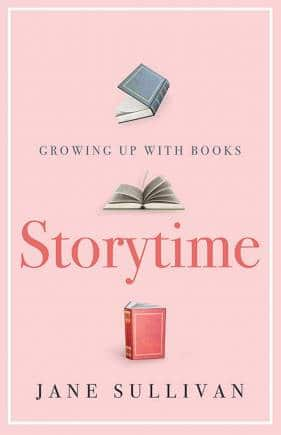



Every act of reading holds the potential to recapture the joys of childhood immersion in books. In her biblio-memoir, Storytime, Jane Sullivan speaks for many when she writes of the “wonder, rapture, delight, surprised recognition, laughter” that is characteristic of reading when young. She points out that a yearning for that idyllic period is more than mere nostalgia; it can be a desire to return to a time when curiosity and openness led us to explore diverse perspectives and worlds without inhibition.
 Ventura Press; 269 pages
Ventura Press; 269 pagesIn her meditation on writing for children, Katherine Rundell touches on the same issue. “What is it like to read as a child?” she asks. “Is there something in it – the headlong, hungry, immersive quality of it – that we can get back to?” Her own childhood need for books, she says, “was sharp and urgent, and furious if thwarted”.
These qualities – immersion, delight, and craving – mark early reading experiences, and reclaiming them enriches and deepens our engagement with books later in life. Writing about the universal appeal of children's literature, Rundell encourages us to find our way back to a time “when new discoveries came daily and when the world was colossal, before your imagination was trimmed and neatened, as if it were an optional extra”. It’s an approach that applies to all types of literature.
J.G. Ballard echoes this, vividly recalling his first readings of Treasure Island and Robinson Crusoe even after five decades. He describes the wide-eyed excitement of a seven-year-old, “that curious vulnerability, the fear that my imagination might be overwhelmed by the richness of these invented worlds”.
 Faber & Faber; 224 pages
Faber & Faber; 224 pagesProust, too, vividly recollects the delights of youthful reading. In an essay, he describes how his most lived childhood days were spent lost in the pages of a cherished book, shrugging off annoying interruptions like a friend’s knock, mealtimes, and “a bothersome bee or sunbeam”. Similarly, Francis Spufford, in The Child That Books Built, recalls “reading catatonically,” completely absorbed in the world of the book: “Flat on my front with my chin on my hands or curled in a chair like a prawn, I’d be gone. I didn’t hear doorbells ring, I didn’t hear suppertime called, I didn’t notice footsteps approaching of the adult who’d come to retrieve me.”
To unlock this experience, one should start by reading for pleasure, one of life's greatest joys. As Edmund White puts it, there’s “no need to underline, press on, try out mentally summarising or evaluating phrases”. One is free to read as a child reads, with “no duties, no goals, no responsibilities, no clock ticking: pure rapture”.
While such engagement may seem exclusive to a halcyon childhood, the goal should be to cultivate a reading approach that embodies these qualities. As E.B. White observes in a Paris Review interview: “Children are…the most attentive, curious, eager, observant, sensitive, quick, and generally congenial readers on earth.” It’s this attitude that readers should try to bring to a book, whether for children or adults.
This isn’t to advocate uncritical reading. For young readers, the notion of disbelief “is not so much suspended as yet unborn”, in Alberto Manguel’s words, but such faculties come to the fore with time. Jane Sullivan writes that within a few pages of returning to Enid Blyton’s The Castle of Adventure, a childhood favourite, she was devastated to find that it was, in fact, terrible: “Whatever magic was in this book for me once has long since evaporated.”
Such recognition has value because it forces the reader to ask what they saw in the book in the first place. In Bookworm, her own memoir of childhood reading, Lucy Mangan emphasises that what Blyton offers children as readers is less than “what she offers to them as negotiators of the real world…refuge from its growing emotional complexities”.
Whether returning to treasured children’s volumes or books for grown-ups, reading like a child means, in Rundell’s phrase, “reading with an open heart”. It requires a willing and joyful suspension of disbelief, an acknowledgement of the miracle of the written text, and a surrender to the emotions it evokes. The result, as Spufford puts it, is to turn into “somebody…enriched by the knowledge that their own particular life only occupied one little space in a much bigger world of possibilities”.
Discover the latest Business News, Sensex, and Nifty updates. Obtain Personal Finance insights, tax queries, and expert opinions on Moneycontrol or download the Moneycontrol App to stay updated!
Find the best of Al News in one place, specially curated for you every weekend.
Stay on top of the latest tech trends and biggest startup news.